HOMEMADE TIPS TO CONTROL FACIAL HAIR GROWTH
April 1, 2013 by admin
Filed under Tips for Ayurveda
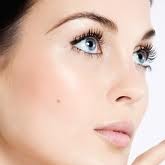 Few individuals are blessed with a pretty face without marks and facial hair. Excessive facial hair is embarrassing especially for teenagers . The individuals who are having excessive facial hair can try these homely tips for controlling facial hair growth.
Few individuals are blessed with a pretty face without marks and facial hair. Excessive facial hair is embarrassing especially for teenagers . The individuals who are having excessive facial hair can try these homely tips for controlling facial hair growth.
Gram flour (besan) is an excellent ingredient to deep cleanse and exfoliate your skin. It is traditionally used in India for beauty care . Besan is available in every kitchen and therefore can be used in larger quantities too. Women at home usually powder Chana dhal, rice and turmeric separately and mix the powders as per requirement prior to use.
Option1:
- Mix Gram flour ( besan) and rice flour in a 2:1 ratio with water into a thick paste and apply on the face. Do not apply on the eyebrows, eye lids, lips. Leave it for 20 to 30 minutes. The paste should dry for better effectiveness. Wash your face when the paste is dry. This routine can be followed once a week and you will observe the facial hair growth has been controlled.
The popular methods recommended is waxing which is not suitable for sensitive skin. Plucking is very painful and can cause scars on skin. Ayurveda recommends a painless and practical simple method to get rid of unwanted hair.This home remedy can be done alternatively.
Buy Biotique Bio Chlorophyll Oil
Option 2:
- Grate a raw potato and extract juice. Soak Chana dhal overnight and grind to a coarse paste. Add both ingredients and apply on face and scrub well. Leave it for 20 minutes and wash your face. You can see the difference after 2 to 3 schedules. Facial hair growth will be minimized. There are no side effects and can be easily at home.
Tips for dark arms and neck:
People shy to wear sleeveless or short arm clothes due to dark under arms. You have been wearing high neck clothes to avoid feeling embarrassed with your dark skin on neck. The neck area is dark especially where the chain comes in contact with the skin. You can try the following home remedies to remove darkness from your under arms and neck area.
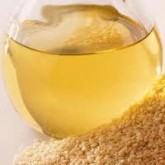 Step 1: Apply Til oil (Sesame oil or Gingelly oil) and massage it on the skin of under arms and neck area for 5 minutes. Wash off. Ideal time is before a bath.
Step 1: Apply Til oil (Sesame oil or Gingelly oil) and massage it on the skin of under arms and neck area for 5 minutes. Wash off. Ideal time is before a bath.
- Frequency: Daily
Step 2: Apply gram flour ( besan) , curd (yogurt) , lemon juice and a little turmeric . Apply this paste on the under arms and the dark areas on your neck, leave it for 30 minutes. Wash off and wipe off all moisture. Apply til oil on the same areas and massage your skin for 5 mins.
Frequency: Three times a week
You can wear clothes with different neck patterns and be confident as your neck skin is not dark any more.
Tips for smooth and bright skin:
You need to schedule this homemade remedy prior to bath.
Step 1: Apply Til oil and massage it on the skin.
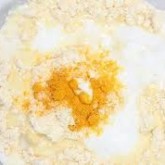 Step 2: Mix 1 cup of Gram flour ( besan) , half cup of rice flour, 4 tsp curd (yogurt) and ½ tsp turmeric powder into a thick paste . Add water to help make a paste and apply on the skin all over the body. Leave it for 30 minutes. The paste can be washed away during bath. This application will help remove dead cells , leaving your skin smooth, shiny and bright. You can include 4 to 5 powdered almonds (badam) in the paste for glowy skin.
Step 2: Mix 1 cup of Gram flour ( besan) , half cup of rice flour, 4 tsp curd (yogurt) and ½ tsp turmeric powder into a thick paste . Add water to help make a paste and apply on the skin all over the body. Leave it for 30 minutes. The paste can be washed away during bath. This application will help remove dead cells , leaving your skin smooth, shiny and bright. You can include 4 to 5 powdered almonds (badam) in the paste for glowy skin.
- Frequency: Once in a fortnight
You will receive lots of admiration for your new look. You can follow the home remedies and bring a great change in your personality.
BENEFITS OF YAM – ELEPHANT FOOT
March 5, 2013 by admin
Filed under Tips for Ayurveda
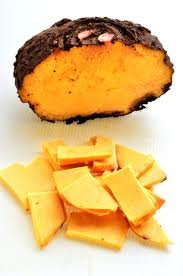 Yam is used in traditional medicine systems, and in Ayurveda it is used for numerous illnesses ranging from minor ailments such as coughs through to improving the quality of sperm and for liver and spleen disorders. As a vegetable the tuber is used to treat piles and hemorrhages.
Yam is used in traditional medicine systems, and in Ayurveda it is used for numerous illnesses ranging from minor ailments such as coughs through to improving the quality of sperm and for liver and spleen disorders. As a vegetable the tuber is used to treat piles and hemorrhages.
The improved varieties of elephant-foot yam are non-acrid, and endowed with excellent cooking qualities. The tubers are prescribed as medicine in Ayurveda to treat piles, dysentery, asthma, swelling of lungs, vomiting and abdominal pain. It is used as a blood purifier. The paste of tubers is applied externally to reduce pain in arthritis.
In India, yams are eaten only as a supplement to cereals. The main edible species in India (especially South India) is the elephant foot yam. Each vegetable offers varied health benefits and has different cooking uses. In scarcity of different staple foods, yam is used. So it is also sometimes referred to as a ‘famine food’.
Medicinal values of Elephant foot yam
It has been proved that elephant foot yam has many medical benefits as its root is highly stomachic, restorative, carminative and tonic.
- The cooling effect of yam can be a cure for Hypertension.
- Yam is dried and often used as a treatment for piles and dysentery..
- Yam helps to reduce cholesterol levels in blood. So it can be used as slimming food because it lowers cholesterol levels and promotes weight loss and also has a high concentration of key minerals.
- Yam can even act as an anticoagulant.
- Elephant foot yam can be safely consumed by diabetic people.
- Elephant foot yam helps to maintain the hormonal balance by increasing the estrogen level in women. It can relieve the women from pre-menstrual syndrome as well.
- Hemorrhoids patients are also prescribed to have elephant yam.
- Powerful antioxidant Vitamin C is present which delays aging.
- It is also provided as a medicine for treatment to patients suffering from acute rheumatism.
- Irregular bowel movements and constipation can also be cured by consuming yam.
- Yam reduces muscle spasms.
However, it should be borne in mind that elephant yam is a cooling food. Hence patients suffering from cold, sinus infection or asthma should avoid its intake.
- The sap from the stem is fermented and used to treat diarrhea and dysentery.
- The inside of the stem is cut and eaten raw as an antidote for snakebites.
Nutritional profile of Elephant foot yam
Elephant foot yam has a rich nutritional profile.
- It provides energy about 330KJ/100g (approximately).
- Potassium, Phosphorous and Magnesium are the key minerals found in elephant yam. It also contains trace minerals like zinc, copper and selenium.
- It also contains Calcium. 50-56mg/100g of its contents is Calcium.
- Its 18-24% is carbohydrate content.
- About 0.8% is fiber..
- Its water content is about 72-79%
- 1.7-5.0% of its content is protein.
- It has omega-3 fatty acids which are known to increase the good cholesterol levels in the blood.
- Diosgenin, a molecular hormone which has potential anticancer effects, is found in yam.
- Elephant foot yam is high on vitamin B6 content.
- It also contains Vitamin C and Vitamin A.
From its wide medicinal benefits and nutritional profile we can hereby conclude that elephant yam is very potent source of nutrition. So its consumption will prove beneficial to health. It can also be consumed by people looking for weight reduction as it is low on fat content (0.2-0.4%). Yam is a healthy low fat food.
WHAT IS AYURVEDA
September 13, 2012 by admin
Filed under An Introduction to Ayurveda
Ayurveda is a science of life based on Vedas, the Hindu books of knowledge and wisdom. In Sanskrit , Ayurveda means “ Knowledge of life” . Ayurveda is a healthy-lifestyle system that people in India have used for more than 5,000 years. Ayurveda is perhaps the most complete system of living, embracing not only medicine, but also philosophy, psychology, lifestyle and health.
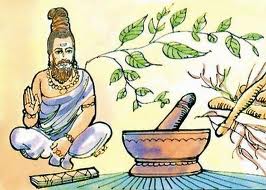
Ayurvedic medicine is holistic, which means viewing the body and mind as a whole.
According to Ayurveda, the five elements of nature (space, air, fire, water, earth) , also known as Panchabhutas combine in the body as three components (doshas) known as Vatta, Pitta and Kapha. These doshas ( life forces) relate closely to the basic elements of nature and to specific functions of the body. A balance of these doshas is thought to be required for optimal health.
Vatta is represented by Air and Space. It is considered the most powerful dosha because it controls very basic body processes such as cell division, the heart, breathing, muscle and joint movement ,discharge of waste and the mind . Vatta also controls anxiety, fear, pain and other functions of the nervous system.
Pitta is represented by Fire and Water. Pitta, which is thought to control such bodily functions as digestion, hormones, metabolism, intelligence and skin color. Pitta controls the emotions of anger, hate and jealousy.
Kapha is represented by Earth and Water . The physical structure of the body, growth of the body and the immune system are governed by Kapha. Emotional responses thought to be controlled by Kapha include calmness, forgiveness, love and greed.
The doshas, which are determined at the time of conception, also is reflected in an individual’s physical makeup and personality. A person with a Vatta makeup tends to have a small, thin build. The Pitta body style is more of a medium, muscular build. The Kapha appearance is usually bigger and well-developed. Most people are considered to have a combination of doshas, with one type of dosha usually being predominant.
The natural constitution is called the prakriti. The prakriti is a person’s unique combination of physical and psychological characteristics and the way the body functions to maintain health. It is influenced by such factors as digestion and how the body deals with waste products. The prakriti is believed to be unchanged over a person’s lifetime.
The most basic idea of Ayurveda is the concept of balance. We are healthy and happy when our doshas and our gunas are properly balanced. Most disease results from an imbalance of our doshas. To heal the disease, the Ayurvedic practitioner attempts through various treatments , dietary changes and exercise to restore the balance.
According to the ayurvedic philosophy, you can also use yoga, meditation or counseling to treat disease.The balanced body then heals itself.
How is Ayurveda used ?
People use ayurvedic practices to maintain health, reduce stress and improve flexibility, strength, and stamina. Researchers have found that yoga and meditation can be effective ways to treat diseases such as asthma, high blood pressure and arthritis.
Ayurveda stresses proper diet for maintaining good health and treating disease. Ayurvedic medicines are prescribed based on the person’s dosha type.
Researchers are studying the effects of ayurvedic herbal medicines on various long-term (chronic) illnesses.
Is it safe to use Ayurveda and follow its practices?
Ayurvedic practices such as yoga and meditation can be safe ways to promote health. If you have a long-term illness, you may be able to combine ayurveda with conventional medical treatment including counseling.
Ayurvedic herbal medicines, like conventional medicines, may cause side effects, trigger allergic reactions, or interact with other medicines or herbs you are taking. Some ayurvedic medicines may contain high levels of heavy metals.
A study in the recent times has indicated the presence of potentially harmful levels of lead and other heavy metals.
Always tell your doctor all your ailments and also the medicines you have been taking during that duration. Mention about all herbs and natural supplements. If you have already been on the course of ayurvedic medicine products, ask your doctor about screening for heavy metals.
To summarize, Ayurveda is a system that uses the body’s own defenses to restore and maintain health and happiness







